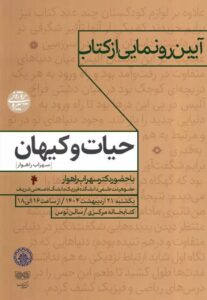Reza Rezaei
Department of Physics, Sharif University of Technology
Saba Radio Array: From Antenna to Interferometer
آرایه رادیویی صبا: از آنتن تا تداخلسنج
سمینار به صورت ترکیبی (حضوری و مجازی) برگزار می شود
چکیده: پروژه آرایه رادیویی صبا با همکاری دانشکدههای فیزیک، برق و مکانیک در دانشگاه صنعتی شریف طراحی و اجرا میشود. تاکنون یک آنتن بشقابی با دهانه ۲/۴ متر ساخته شده است. گیرنده رادیویی در بسامد ۱/۴۲ گیگاهرتز پیوستار و خط طیفی هیدروژن ۲۱ سانتیمتر را با پهنای باند یک و شش دهم مگاهرتز ثبت میکند. دمای سیستم ۱۵۵ کلوین و آستانه آشکارسازی سیگنال در حد چند صد جانسکی است. در طول سال گذشته آنتن اول صبا چند چشمه رادیویی را رصد کرد و این نتایج در کنفرانسهای داخلی ارائه شد. با کالیبراسیون اجزای جدید گیرنده و تستهای پایداری، ما به مرحله بهبود دمای سیستم و بالاتر بردن حساسیت گیرنده رسیدیم. اکنون که مراحل ساخت آنتن دوم در حال اتمام است، با طراحی و ساخت یک ماشین همبستگی به دنبال ثبت اولین سیگنال تداخلسنجی نجومی هستیم. با تداخلسنجی رادیویی توان تفکیکزاویهای به اندازه نسبت فاصله آنتنها به ابعاد آنها بهتر میشود. پروژه صبا در این مرحله چندین زیرپروژه دارد و دانشجویان علاقهمند به کار تجربی میتوانند به آن ملحق شوند.
یکشنبه 27 مهر 1404، ساعت 15:00
Sunday 19 October 2025 – 15:00 Tehran Time
Hybrid Seminar
دانشکده فیزیک – تالار پرتوی – اتاق 412 Physics Department – Partovi Hall – Room 412 /
https://vc.sharif.edu/ch/cosmology
گزینه ورود به صورت مهمان – Enter as a Guest

